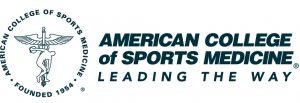For Immediate Release
May 18, 2016
Mike Fulton at (301) 651-2508 or mikef@asheragency.com (Asher Agency)
Annie Spencer at (317) 637-9200 or aspencer@acsm.org (American College of Sports Medicine)
Leslie Porras at (818) 234-3368 or Leslie.Porras@anthem.com (Anthem Foundation)
Washington, D.C., is Most Fit City for 3rd consecutive year, new rankings reveal
Ninth annual American Fitness Index® finds rise in people exercising, drop in smoking
Indianapolis (May 18) – Washington, D.C., closely followed by Minneapolis-St. Paul and Denver, are the three fittest of the 50 largest metropolitan areas in the U.S., according to the ninth annual American Fitness Index released today by the American College of Sports Medicine (ACSM) and the Anthem Foundation, the philanthropic arm of Anthem, Inc. View the rankings and individual metro data here or in the chart below.
The nation’s capital leads the pack for the third straight year, Minneapolis-St. Paul came in second, and Denver moved up from sixth to third in 2016. The three top metro areas showed increased walking by residents using public transportation; more parkland for exercise; and lower cardiovascular and diabetes issues. The Washington, D.C., region’s lower rate of smoking tipped the scales in its favor. Midwestern metro areas Indianapolis, Oklahoma City and Louisville rank last in the index.
Nationally, there were some remarkable positive shifts in a few measures comparing values between the 2016 and 2015 reports:
- total scores increased for 30 MSAs (60%)
- 11.8% increase in the percentage of individuals who indicated they exercised in the last 30 days
- 4.7% drop in the percentage who smoked
- 7.4% drop in the diabetes death rates overall
- 5.2% increase in total park expenditure per resident
- twice as many states had policies in 2016 that required teaching physical education at the elementary, middle or high school level
Conversely, the 2016 found that scores slipped for 19 MSAs from 2015 to 2016. MSAs experiencing the largest drop in scores included Las Vegas, Los Angeles, Orlando, Sacramento and San Diego. The report also found a 7.7 percent increase in the percentage of the MSA population reporting a diagnosis of angina and a 7.0 percent increase in the percentage reporting a diagnosis of diabetes.
There were also some notable shifts in the rankings for individual MSAs. The rank changed five positions or more for nine MSAs (Chicago, Las Vegas, Los Angeles, Milwaukee, New Orleans, Orlando, Providence, Sacramento and San Diego).
To aid cities of all sizes and metro areas in enhancing healthy lifestyles and promoting physical activity, ACSM and Anthem Foundation developed and released in late 2015 an Community Action Guide offering an overview of the critical decisions and factors related to effective community action: https://americanfitnessindex.org/community-action-guide/
“The has continually proven its value as a trusted measurement of the health of our metro areas, and it has also become a catalyst for urban and suburban leaders to shape infrastructures that promote healthy lifestyles and create positive outcomes,” said chair of the Advisory Board Walter R. Thompson, Ph.D., FASCM. “Our overarching goal is to offer communities and residents resources that can help them assess, plan and implement measures for a quality, healthier life.”
According to Anthem Chief Clinical Officer Craig Samitt, MD, promoting a healthy lifestyle begins with each individual. Samitt encourages all Americans to exercise for at least 30 minutes and participate in 10 minutes of stretching and light muscle training five days a week. “Modeling healthy behavior by incorporating activity into the weekday schedule and practicing good nutrition can improve fitness,” said Samitt. “We’re proud to continue our partnership with ACSM on an initiative that is providing actionable data for communities to create a culture of healthy lifestyles.”
At the community level, the data report has been used as an assessment and evaluation tool to educate community leaders on the importance of key indicators of physical activity. Leaders can then focus on policy, systems and environmental change (PSE) strategies that are evidence-based and create sustainability for the community.
±There was a tie in the ranking between the MSAs.
*The scores shown have been rounded to the nearest tenth of a point resulting in some apparent ties; however, the rankings are based on the full calculated score values that were not equal in those cases.
Methodology
ACSM, the Indiana University School of Family Medicine and a panel of 26 health and physical activity experts developed the methodology to analyze U.S. Census data, data from the U.S. Centers for Disease Control and Prevention’s Behavioral Risk Factor Surveillance System (BRFSS), The Trust for the Public Land City Park Facts and other existing research data in order to give a scientific, accurate snapshot of the health and fitness status at a metropolitan level.
ACSM is a global leader in promoting the benefits of physical activity and advocates for legislation that helps government and the health community make it a priority. ACSM encourages Congress to support continued funding of parks, trails and safe routes to school, as well as the need for all Americans to meet the prescribed physical activity recommendations included in the National Physical Activity Guidelines, and the need for the guidelines to be regularly updated every 10 years.
The data is made up of personal health, and community and environmental indicators. Visit the online newsroom at www.AmericanFitnessIndex.org for a complete list of the data components.
About the American College of Sports Medicine
The American College of Sports Medicine is the largest sports medicine and exercise science organization in the world. More than 50,000 international, national and regional members are dedicated to advancing and integrating scientific research to provide educational and practical applications of exercise science and sports medicine. More details can be found at http://www.acsm.org/
About Anthem Foundation
The Anthem Foundation is the philanthropic arm of Anthem, Inc. and through charitable contributions and programs, the Foundation promotes the inherent commitment of Anthem, Inc. to enhance the health and well-being of individuals and families in communities that Anthem, Inc. and its affiliated health plans serve. The Foundation focuses its funding on strategic initiatives that address and provide innovative solutions to health care challenges, as well as promoting the Healthy Generations Program, a multi-generational initiative that targets specific disease states and medical conditions. These disease states and medical conditions include: prenatal care in the first trimester, low birth weight babies, cardiac morbidity rates, long term activities that decrease obesity and increase physical activity, diabetes prevalence in adult populations, adult pneumococcal and influenza vaccinations and smoking cessation. The Foundation also coordinates the company’s year-round Associate Giving program which provides a 50 percent match of associates’ pledges, as well as its Volunteer Time Off and Dollars for Doers community service programs. To learn more about the Anthem Foundation, please visit http://www.anthem.foundation and its blog at http://anthemfoundation.tumblr.com.








